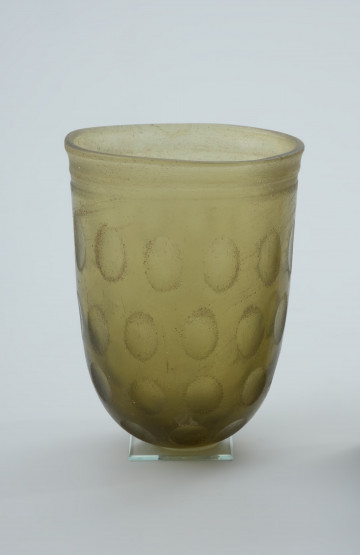
Decorated goblet
National Museum in Szczecin
Part of the collection: Antiquity
The clay vessel (vase) discovered near Resko was handed to the Museum in Szczecin in unknown circumstances. The only valid information is that it was found by the Rega river, approx. 4 km away from Resko. The other fact is that it did not come from the recorded inhumation cemetery discovered in 1913 in the same area, which is similarly dated to the 3rd-4th / 6th century. The vase has a dark-brown colour and a smooth surface. Its body is biconical, and its mouth is in the form of a wide orifice. It is richly ornamented with stamp marks that are forming rings around the vase; the rings are separated with shallow, carved lines. Stamp marks have various forms: x-shaped, combs, rectangles, and diagonal lines. In the western Pomerania region, vessels are related to the population of the Dębczyno group, while in the south-eastern Pomerania they can be connected with the population of the late Wielbark culture. Such pottery also occurs in the Lower Elbe and Weser basin, the area of Saxon population settlement. During the 1st and the 2nd centuries, vessels were hand-made out of a single lump of clay or several overlapping round-shaped pieces. Brushing the smoothed clay surface with powdered graphite produced a black gloss effect. The most popular vessels were vases, bowls, and cups. Pottery made on a potter’s wheel started to occur in the first half of the 3rd century AD. The first vessels made on a potter’s wheel that were discovered in the Upper Silesia region and the western Lesser Poland region (occupied by Celts) are dated to the 1st century BC.
Monika Witek
Author / creator
Dimensions
cały obiekt: height: 17.7 cm
Object type
furnishings and equipment; container; vessel (container)
Technique
manual modelling
Material
clay
Creation / finding place
Owner
Muzeum Narodowe w Szczecinie
Identification number
Location / status